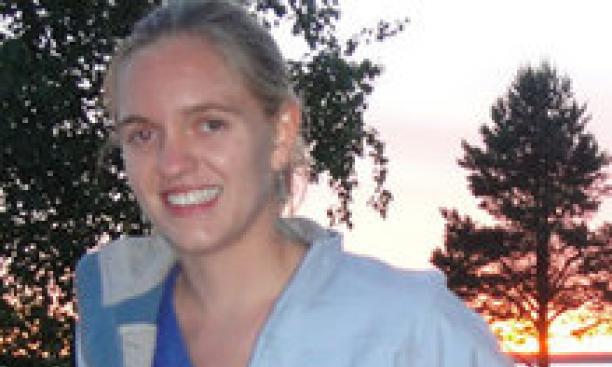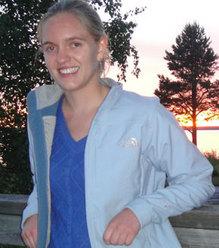
Just three years into graduate school at Harvard, Courtney Dressing ’10 has helped to find an earth-sized, potentially habitable planet that may be pretty close by. In astronomical terms, “pretty close by” is still 13 light years — about 76 trillion miles — away, but this is a small distance compared to the vast expanses astrophysicists are used to dealing with.
Earth-like planets are of a certain size and distance from their host stars, Dressing explained, and may thus have surface temperatures that allow them to have the “right” amount of liquid water.
In finding the possible neighbor planet, Dressing has become well-acquainted with the Kepler telescope, a NASA-launched spacecraft whose mission is to find planets similar to the Earth circling other stars. She, together with Harvard astronomer David Charbonneau, used data from the telescope to examine red-dwarf stars and 95 of their planetary companions. Red-dwarf stars are excellent candidates for planet hunting. They are about a third as large and one-thousandth as bright as the sun, which makes it easier for scientists to locate planets — one the size of the Earth, for example, would block more of the red dwarf’s light than it would the sun’s.
Dressing and Charbonneau determined that 6 percent of the red-dwarf stars had potentially Earth-like planets circling them, and 60 percent have planets smaller than Neptune. Their results will soon appear in The Astrophysical Journal.
Dressing’s study has gathered considerable public attention, receiving coverage in publications such as Scientific American and the Los Angeles Times. “I think the natural curiosity is to wonder if we’re alone in the universe or not,” Dressing said. “Just knowing that there could be another planet like the earth so close is comforting.”
This is not her first attempt at finding planets — her senior thesis featured an investigation of an imaging technique used to acquire planetary observations. Dressing said she remembers learning a great deal from her independent work in astrophysical sciences, and appreciated her department’s small size.
Like many of our Tiger of the Week honorees, Courtney Dressing ’10 was nominated by a PAW reader. Do you have an idea for a future Tiger of the Week profile? Let us know.

